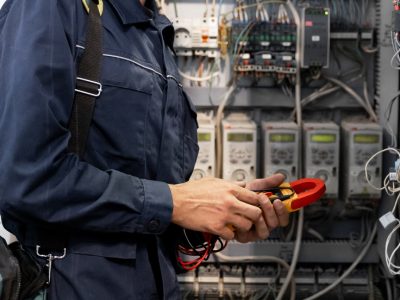In today’s industrial world, the energy and mining sectors are the backbone of global infrastructure, supplying the resources that keep economies moving. Behind these massive operations lies a crucial and often overlooked process — heavy metal fabrication. From constructing durable machinery to creating massive structural components, heavy metal fabrication plays an essential role in keeping energy and mining facilities running efficiently, safely, and reliably.
The Role of Heavy Metal Fabrication in Energy Production
The energy industry demands precision, durability, and reliability. Whether it’s a power generation plant, a refinery, or a renewable energy facility, the equipment used must endure extreme conditions — high pressure, heat, and constant operation. Heavy metal fabrication provides the foundation for this durability.
Fabricators design and produce custom steel and alloy components that make up boilers, pressure vessels, turbines, heat exchangers, and storage tanks. Each component must be built to exact specifications and withstand years of demanding use. High-quality fabrication ensures these structures can handle thermal expansion, chemical exposure, and mechanical stress without compromising safety or performance.
Additionally, with the growing shift toward renewable energy, the need for precise and large-scale fabrication has expanded. Wind turbine towers, solar panel supports, and hydroelectric structures all rely on heavy metal fabrication for strength and stability. The same techniques used in traditional energy systems are now being applied to cleaner technologies — proving that the field remains vital even as the industry evolves.
Supporting the Mining Industry’s Toughest Challenges
Mining operations present a different set of challenges. Equipment used in these environments faces constant exposure to abrasion, moisture, and vibration. Heavy metal fabrication provides the rugged components that keep mining operations efficient — from structural supports and chutes to conveyors, crushers, and processing tanks.
In many cases, these parts are custom-fabricated to meet unique site conditions or ore characteristics. Fabrication experts must understand the demands of the environment and the mechanical loads equipment will face daily. Using specialized welding techniques and high-strength materials, fabricators build equipment that can handle tons of material without failure.
The ability to customize is particularly valuable for remote mining sites, where downtime is costly and repairs must be quick and reliable. Having a trusted fabrication partner ensures that replacement parts or upgrades can be designed, produced, and delivered promptly — minimizing operational disruptions.
Precision, Safety, and Quality Control
Precision is the defining characteristic of successful heavy metal fabrication. Each cut, weld, and assembly is subject to strict quality controls. Fabricators often use advanced methods like CNC machining, automated plasma cutting, and robotic welding to achieve exact tolerances and consistency across large-scale projects.
Safety is equally important. In industries like energy and mining, even a small defect can lead to catastrophic failure. That’s why fabrication teams adhere to rigorous standards such as ASME and AWS certifications. These standards ensure every pressure vessel, tank, and structural element meets strict performance and safety criteria before being installed in the field.
The Future of Heavy Metal Fabrication in Industrial Development
As both the energy and mining industries evolve, so do fabrication capabilities. Automation, 3D modeling, and advanced alloys are transforming how components are designed and manufactured. Fabrication shops that invest in modern technology can now deliver complex assemblies faster, with greater accuracy and longer lifespans.
Beyond technology, sustainability is becoming a growing focus. Many fabrication companies are adopting eco-friendly processes, such as recycling scrap materials and improving energy efficiency in production. This approach not only supports environmental goals but also reduces long-term costs for industrial clients.
Final Thoughts
From power generation plants to remote mining operations, heavy metal fabrication remains the cornerstone of industrial progress. Its ability to create strong, precise, and reliable components ensures that critical infrastructure can withstand the toughest operating conditions.
As industries continue to expand and modernize, the demand for expert fabrication services will only grow — driving innovation, sustainability, and reliability across every sector that relies on metal to keep the world running.












Comments